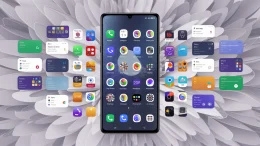Moral panic. Time and time again, changes occur that make some people feel as though the very fabric of society is at risk. Those changes can be cultural; they can be technological. Often, they involve activities associated with and undertaken by youth.

It’s no surprise then that of mobile phones and children have repeatedly elicited moral panic. According to a 2010 survey by the Pew Research Center, 75% of 12- to 17-year-olds own cellphones. Project Tomorrow’s Speak Up 2010 survey found that 20% of children from kindergarten through second grade said they owned cellphones, and 29% of those from third through fifth grade said they did. These children don’t just own feature phones either; an increasing number say they own smartphones and have access not just to mobile voice, but texting and data plans as well.
Want to find out more about teen sexting and its impact on tech companies? Then join danah boyd, senior researcher at Microsoft Research, at next week’s ReadWriteWeb 2WAY Summit for a conversation about the practice of teen sexting, why entrepreneurs should care, what the social and legal implications of this practice are, and how technology companies should respond.
It’s this ubiquitous access to technology by children that’s cause for concern among some sectors. For others, it’s the ubiquitous text-messaging. It’s the content of the texts (namely sexual content). It’s the places where they text (while driving, while at school).
There have been numerous stories in the news lately about teens in trouble due to their mobile behaviors. At ReadWriteWeb’s 2WAY Summit, social researcher danah boyd will discuss teen sexting and its impact on technology companies.
Although sexting makes headlines, it isn’t the only place in which we’ve seen great upheaval and concern surrounding teens’ mobile habits. Here are some of the other stories we’ve covered here at ReadWriteWeb in the last year that demonstrate how mobile phones are changing teens’ communication patterns – with each other, at home, and at school.
Cellphones in the Classroom: Distraction or Tool?
Although cellphones are teens’ primarily communication devices, most schools continue to ban them from the classroom, arguing that they are a distraction and that students’ data plans and 3G access allow them to bypass schools’ web filtering mechanisms.
The ReadWriteWeb 2WAY Summit NYC
Experience the Future of the Web…2WAYS
June 13-14, Columbia University, NYC
Tickets from $495 – Sign up Now
Day 1 Schedule
- When Disruptions Collide: Political Uprisings and Social Media
- Fred Wilson Keynote
- Teen Sexting and its Impact on Tech Companies
- Q&A With Jason Calacanis
- Creative Exploitation of Social Media from The Swine Flu to The Onion
- Chris Dixon and His Extraordinary Machines
- Flipboard & The Future of Media Consumption
- Life is a Game: Foursquare and the Future of Location
- How W3C’s Open Web Platform is Transforming Industries
Don’t miss more sessions and speed geeking on Day 2!
But students are speaking out about this. In a
, they listed their inability to use their cellphones at school as one of the major technology barriers they face. High schoolers said they wanted to use cellphones to check their grades, conduct research, take notes in class, collaborate and communicate with friends, use a calendar, send an email, learn about school activities, and create and share videos.
Despite students’ interest in using cellphones at school and even parents’ willingness to pay for the devices and the data plans, over 65% of principals surveyed said they’d refuse to let students do so.
Cellphones as the Point of Control
The argument for getting a cellphone – whether it was an argument from a teen or a parent – used to involve safety. But teens are now clear that the primary reason they want one is to stay in touch with their friends.
For parents, however, a children’s cellphone is still very much a point of control. Parents put limits on the number of minutes and number of texts. They admit to regularly looking through the contents of their children’s phones, and they say that they take away access to cellphones as punishment.
But cellphones offer another point of control and surveillance as well. In April, ReadWriteWeb’s Sarah Perez wrote about the potential to have parental controls baked in to handsets. Parents would be able to track phones’ location, turn off access to texting when the phone (or more specifically, a car a teen is driving) is in motion, preview photos that are sent from the phone, and monitor Web searches and application downloads.
Will these sorts of technologies that give parents better control help assuage fears about teens’ mobile phone usage? Will they help convince schools to let students bring their phones into the classrooms?
After all, the pervasiveness of these devices means that we’ve reached the point where the vast majority of teens are carrying a small computing device in their pockets or backpacks? Is that technology cause for celebration or panic?

















